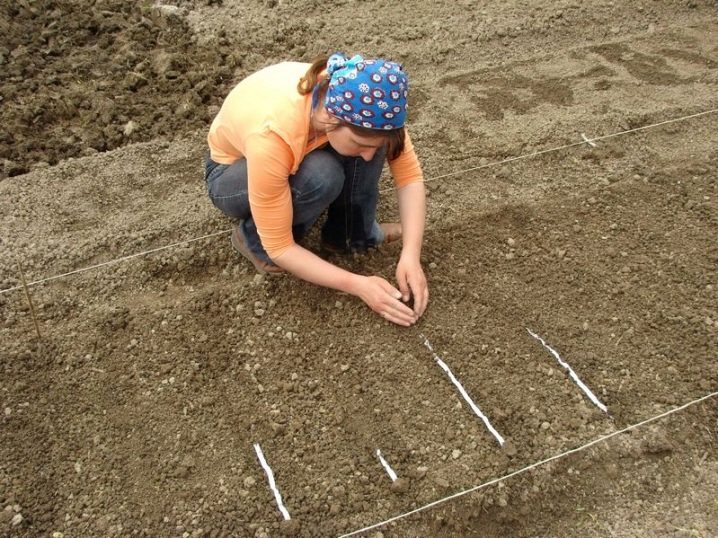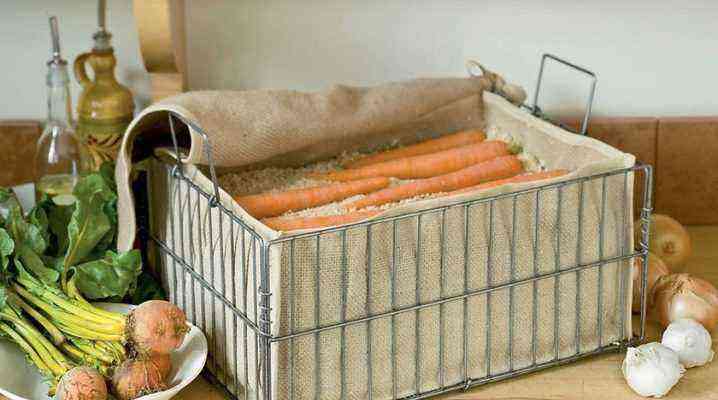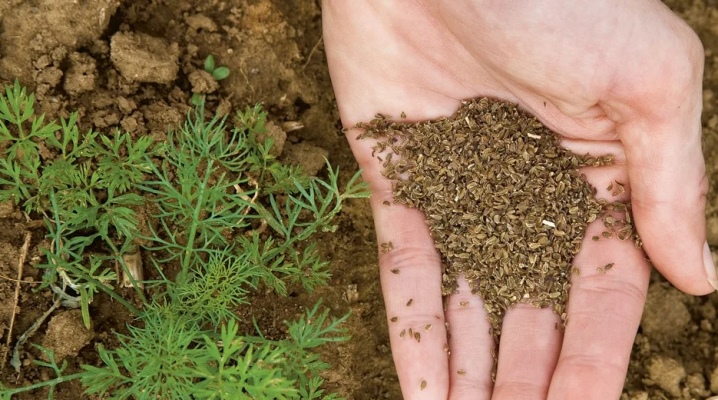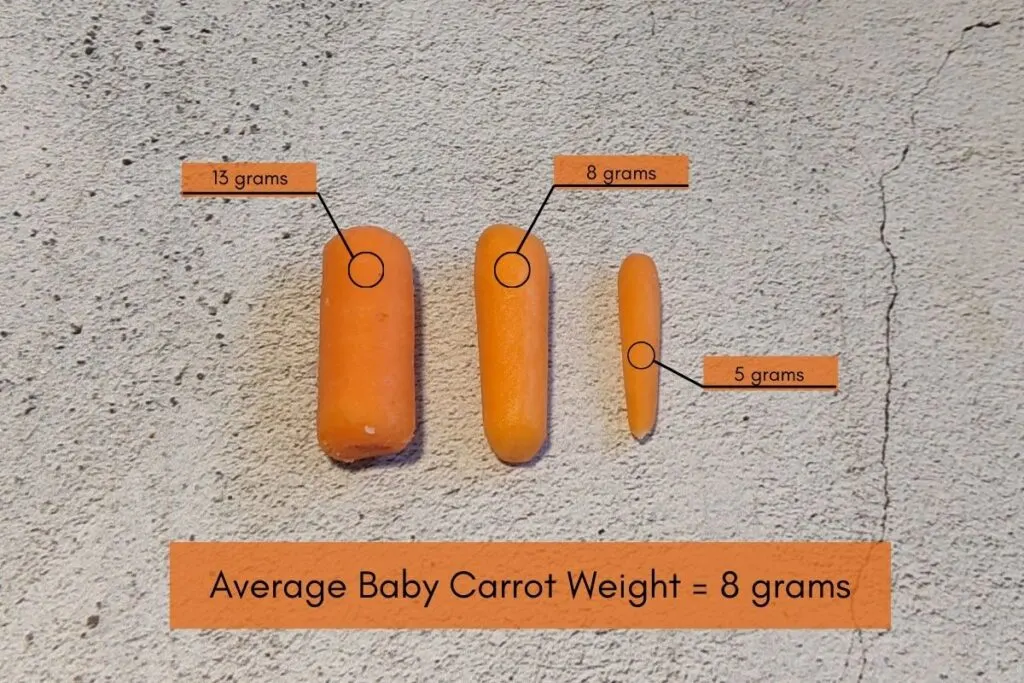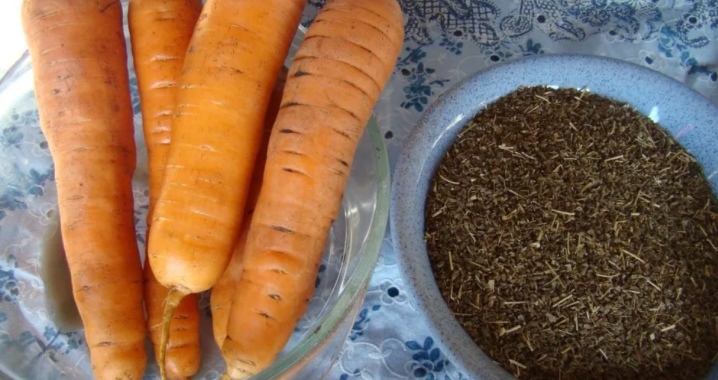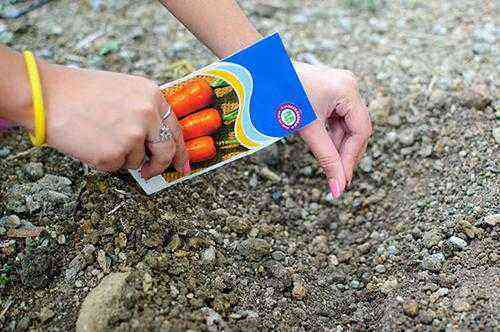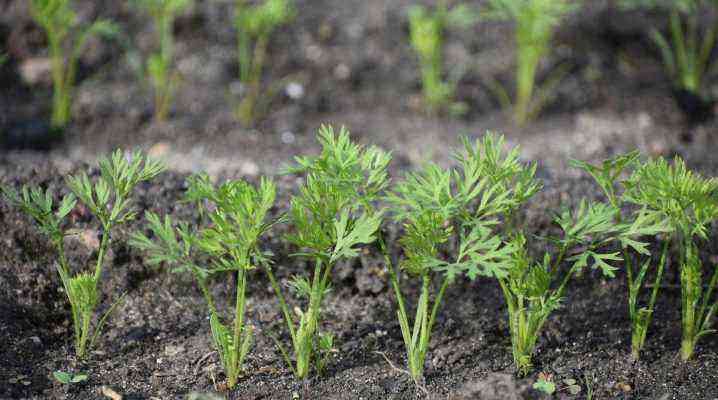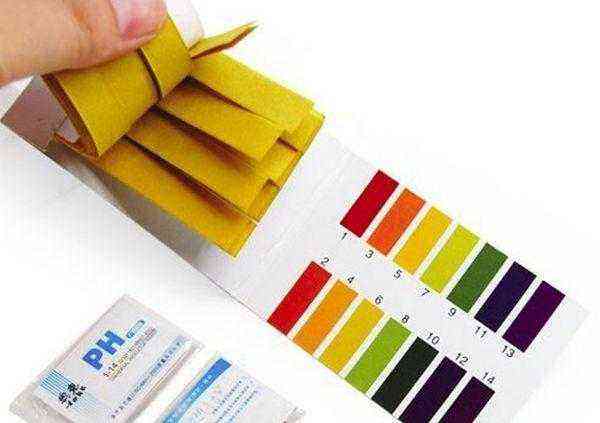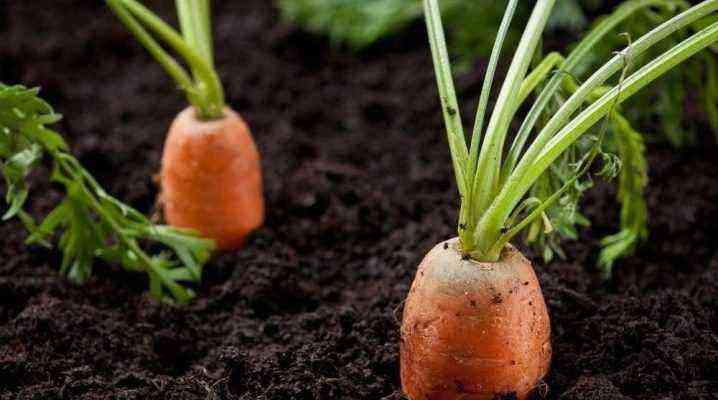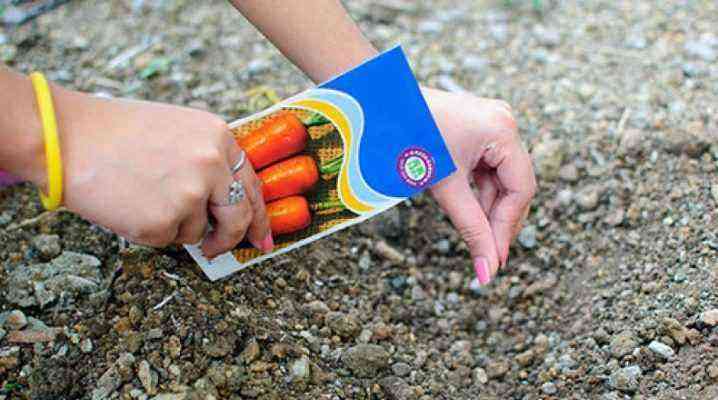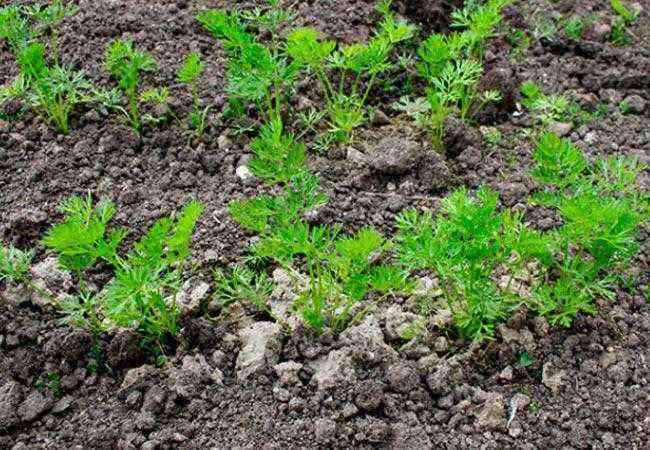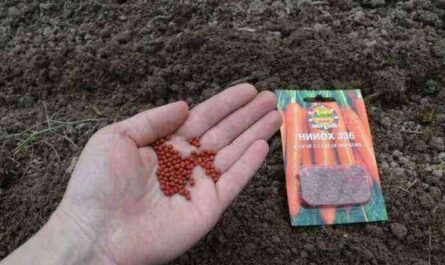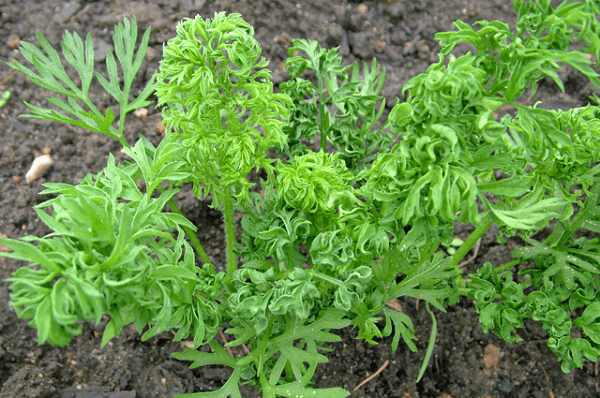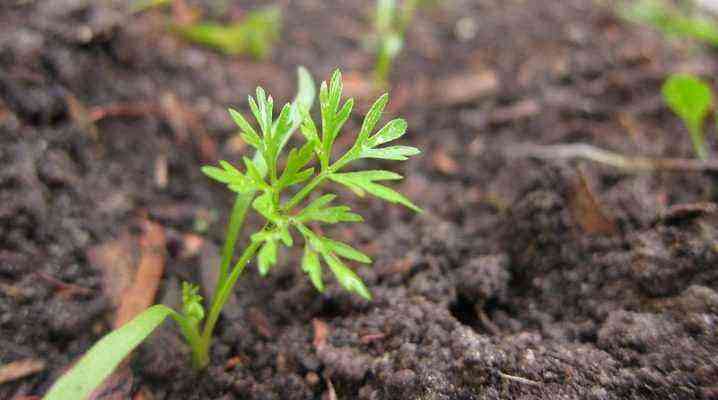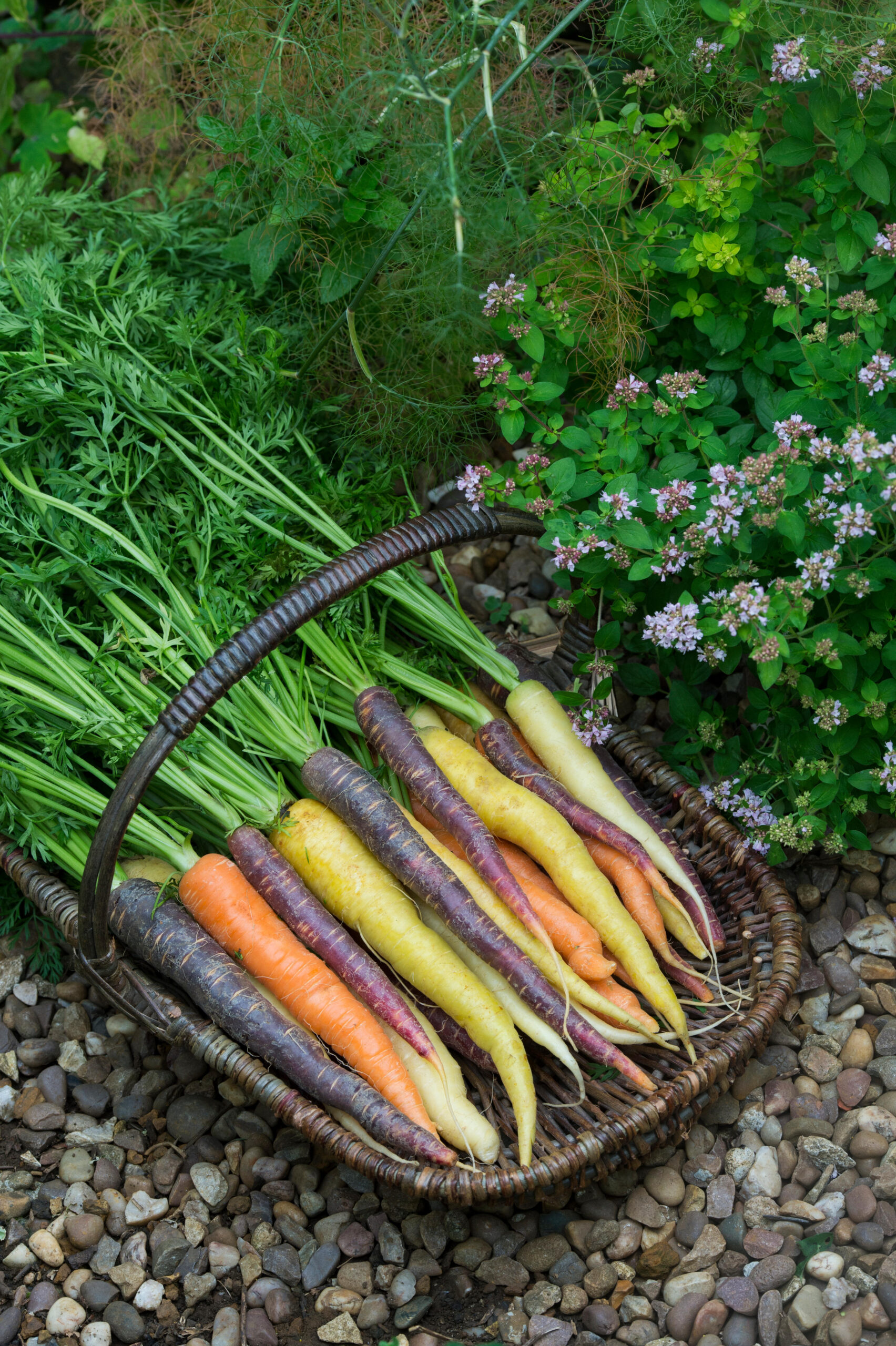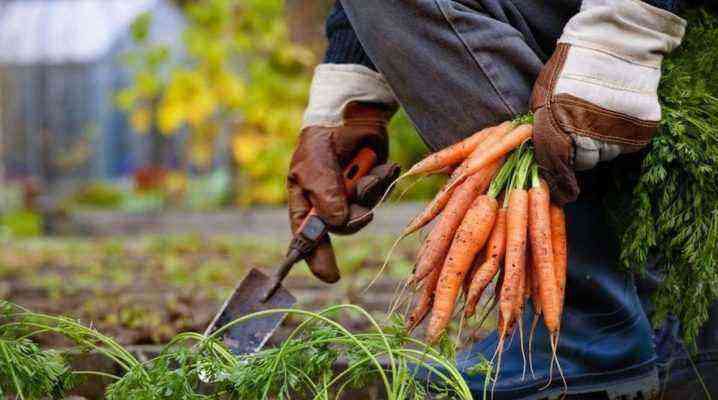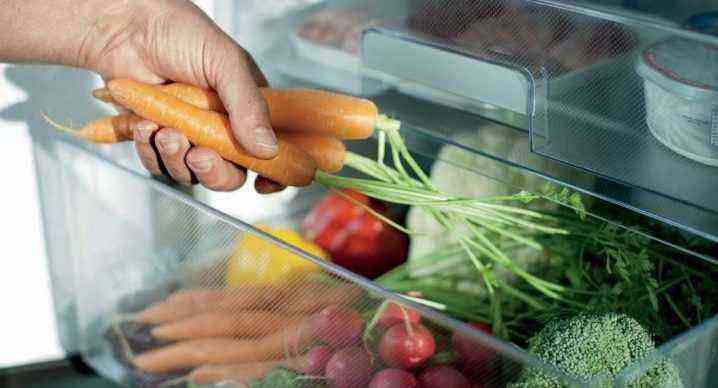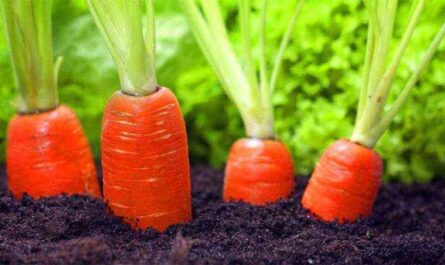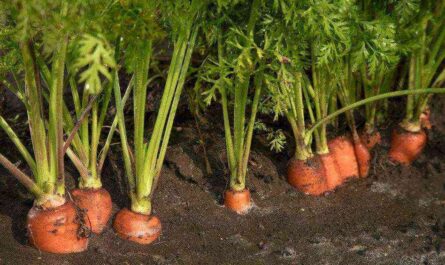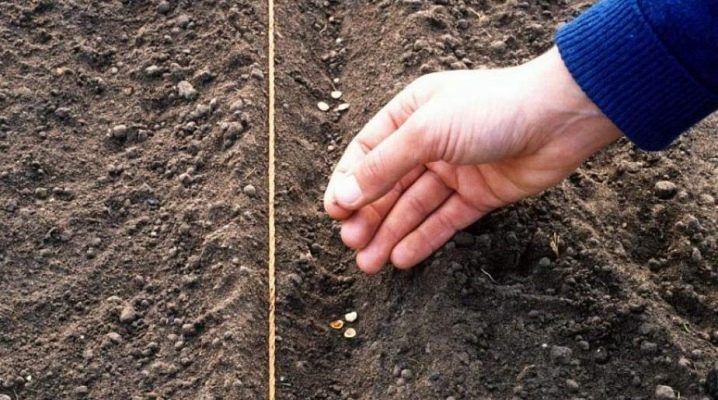
Carrots are a vegetable crop that can be found in almost every area, regardless of the region. At the same time, in order to get a rich and high-quality harvest, it is important to know exactly how and when to plant it correctly. At the moment, in the arsenal of modern gardeners there is more than a wide range of relevant agricultural practices.
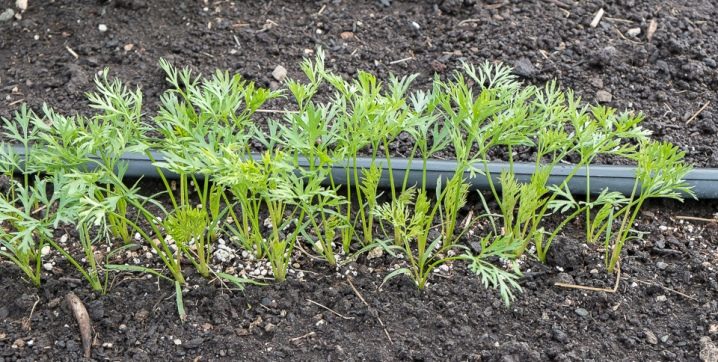
Deadlines
The choice of a specific time to sow carrots depends not only on the varietal characteristics of the crop. Also, favorable days for planting are determined by the climate of the region and weather conditions in a particular period. Here it is important to take into account the air temperature and the degree of warming up of the soil, as well as weather forecasts.
By the way, often gardeners prefer to determine the optimal timing of the relevant work according to the lunar calendar. In this case, we are talking about the waning moon, since it is commonly believed that it is during these periods that the root system is actively developing.
In such calendars, it is clearly indicated from what date and until what date it is better to sow carrots.

In the spring
Planting vitamin roots in open ground is recommended when it has already warmed up to + 4-6 degrees, but still retains moisture from melted snow. At the same time, day and night air temperatures are +10-12 and +2-5 degrees, respectively. In addition, in order to accurately determine the time of planting, and so that it is not too late for agrotechnical work, it is necessary to take into account the ripening time, which looks like this, taking into account varietal characteristics:
- early – 80-100 days;
- medium – 110-120 days;
- medium-late – 120-140 days;
- late – from 140 days.
Particular attention should be paid to the duration of the vegetation stage of plants, as well as the nuances of the climate in a particular area. The last factor is of key importance and, taking it into account, it is possible to determine the optimal timing for planting crops by region:
- South of the Russian Federation (Krasnodar Territory, North Caucasus, Stavropol Territory, Republic of Crimea) – from early March to early April;
- the middle lane, including the Moscow region – from mid-April to May;
- St. Petersburg and Leningrad region – 2nd decade of May;
- Siberia, the Urals and the northern regions – a fairly short period from late May to early June.
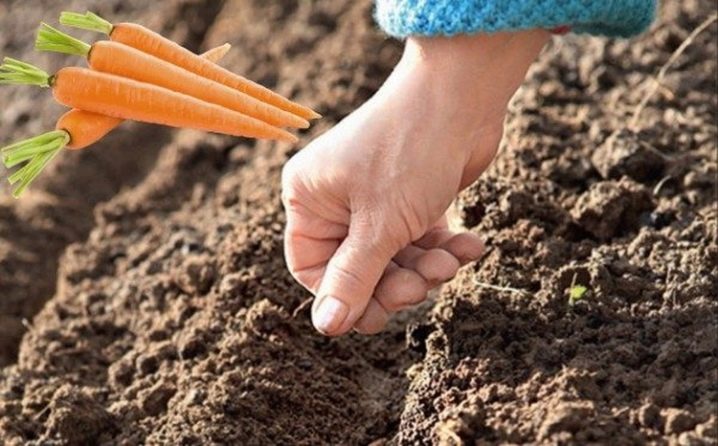
Types of carrots with different fruit ripening periods are planted on the site in several approaches. Often, an early ripening variety is sown on the beds at the beginning of the first summer month after harvesting early greens.
In places with difficult conditions, farmers are trying to experiment by growing seedlings. This allows you to accelerate the ripening of the crop, shifting the timing of its collection by 2-3 weeks.
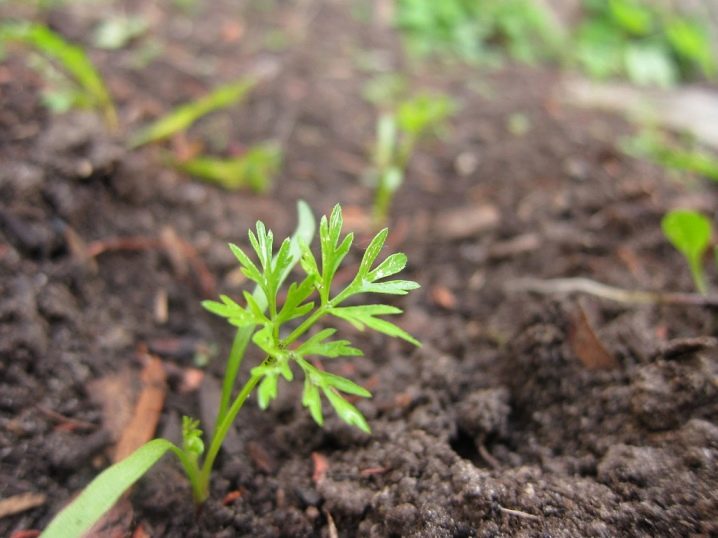
Under the winter
In this case, the main task is to prevent the seeds from germinating prematurely. To do this, they need to be planted 1,5-2 weeks before frost, when the soil has time to dry out and “seize” as a result of cold snaps. The thermometer during this period will no longer rise above 2-3 degrees Celsius. Depending on the region, such favorable conditions for sowing develop at the following times:
- south – from late November to early December;
- Moscow region and the middle zone of the Russian Federation – from late October to early November;
- regions of Siberia and the Urals – October;
- northern territories – the end of September.
It is worth considering that when planting winter carrots, the consumption of seed increases by about 1/5 compared to spring planting.
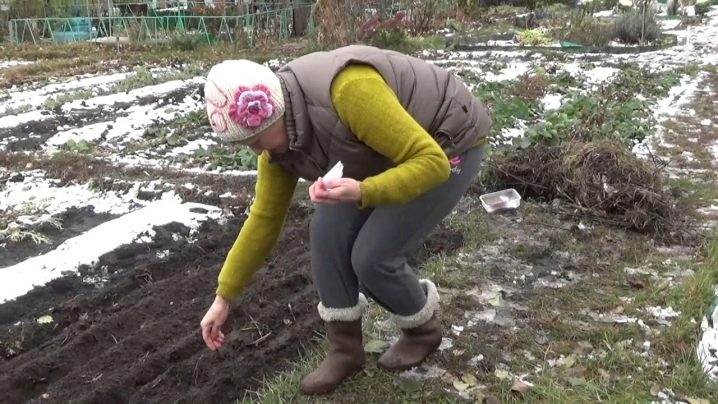
Site Selection
On the one hand, the vegetable crop in question cannot be described as whimsical and particularly demanding on growing conditions. However, there are a number of key rules regarding the competent choice of a site for landing. Harvest can be obtained in any case, but its quality and volume will be in question.
Under carrots, it is recommended to choose the most even places, taking into account the following requirements.
- Illumination of the site. It is important to remember that the culture loves the sun and does not tolerate shade and even partial shade. The lack of sunlight leads to the fact that the tops grow stunted, and the roots themselves turn out to be thin and weak. Ideally, the beds should be illuminated throughout the day, and even partial shading of the site can negatively affect the yield and taste of the fruit.
- The composition and condition of the soil. Slightly acidic and neutral loose soils are preferable for carrots, and alkaline and acidic soils are categorically contraindicated. For active growth and full development of the culture, soils with a high concentration of sand or sandy loam are most suitable. If the plants are placed in dense loam, then most often they bear small fruits, which quickly rot during storage.
- Predecessors in the beds. The best options are cucumbers, tomatoes, garlic, onions, cabbage, potatoes and cereals. It is strongly not recommended to grow carrots after dill, fennel, parsnips, parsley, as well as the crop itself and any umbrella. It is important to remember that violations of crop rotation rules inevitably lead to extremely negative consequences.
- neighboring cultures. As practice shows, peas, tomatoes and radishes growing nearby have the most beneficial effect on the yield of root crops.

When choosing a site, you must remember that the most unsuccessful options will be:
- big slopes;
- thickets of wheatgrass;
- beds after the above unfavorable predecessors.
Soil preparation
It is necessary to pay attention to the preparation of the selected site since the fall. It is important that during the winter months all fertilizers applied have time to be absorbed, which in itself will increase their effectiveness.. Ideal conditions for the vegetable in question are moisture-permeable and well-aerated soil. It should also be loose and as fertile as possible. Another important point is the complete absence of stones and any rhizomes.
Key features of soil preparation:
- in autumn, the beds are dug up with the removal of all plant residues;
- the digging depth is 1,5 bayonets, since large horizons provide favorable conditions for the growth of root crops when ripening in depth (in parallel, future harvesting is facilitated);
- when digging into loamy heavy soil, a mixture of sand and peat is added at the rate of 1 kg per square;
- if a site with a high sand content is selected, then the addition of humus or manure is recommended;
- humus is introduced into the soil with low fertility in the fall, and in the spring (before sowing), organic matter is allowed;
- for acidified soil, the addition of lime or chalk is provided (a glass of substance per 1 sq. M);
- in the spring, before planting, the ground in the beds can simply be loosened and leveled.

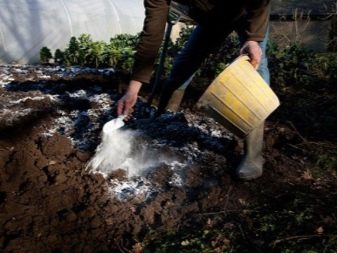
It should be remembered that smooth and presentable-looking carrots grow only in loose soil. If the plant develops in dense soil, then the fruits will eventually turn out to be crooked and thin. Equally important is the application of fertilizers. For example, in situations with clay soil, the following additions per square meter will be relevant:
- coarse sand – 0,5 buckets;
- compost or humus – 5 kg;
- ash – 0,3 kg;
- lime (for acidic soil) – 0,5 kg;
- mineral fertilizers – 2 tbsp. l.
It is worth noting that the type of fertilizer is determined solely by the type of soil. In parallel, before introducing a particular substance, it will be useful to establish its acidity and density.
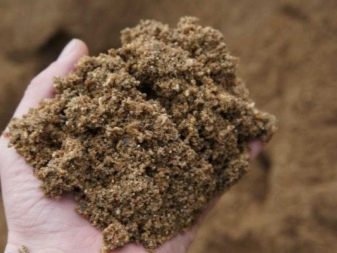

How to speed up seed germination?
There is no need for any treatment when using purchased granulated and glazed seeds. Such seed has already been processed and coated with a nutrient coating. It is important to remember that such granules cannot be soaked in order to preserve this very protective layer. In other situations, you will need to take the following steps.
- Sorting, in which the seeds are placed in a salt solution for 5 minutes. Floated instances are rejected because they are dissimilar.
- Heat treatment, which involves soaking the material first for 20 minutes in hot (50-60 degrees), and then for 2-3 minutes in cold water.
- Treatment with stimulants. Seeds are placed in a cloth impregnated with appropriate solutions.
- Drying to dryness.
For many gardeners, especially beginners, the answer to the question is whether it is worth germinating the seeds of the described crop. In order to stimulate germination, you can perform the following actions.
- Spread the seed on a damp cloth, ensuring the temperature is within 20-24 degrees.
- Keep the seeds for 5-6 days before they swell. It is desirable that they do not have time to hatch, but it is worth considering that if small shoots appear, they will be eliminated during planting.
- Dry the material to a free-flowing state and sow immediately.
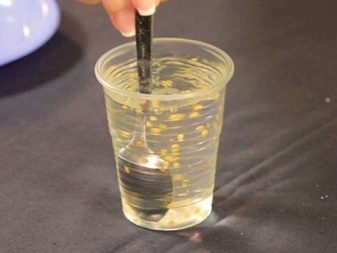
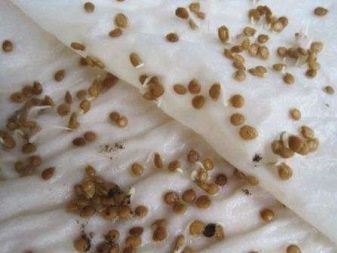
There is also a fairly ancient folk way to speed up the germination of carrots. In this case, we are talking about the following algorithm:
- seeds are poured into a cloth bag, small in size;
- in the spring they are buried in warm and moist soil to a depth of about 25 cm;
- withstand up to 2 weeks for swelling;
- remove the bag and dry its contents on paper or cloth;
- sown after drying.


Ways of planting
Modern farmers in their arsenal have many different agricultural practices and tricks associated with planting carrots. Moreover, each method has its own characteristics, pros and cons. Regardless of the method chosen, it is important to consider that the sowing depth should be:
- heavy loam – no more than 2 cm;
- sandy soils and sandstones – from 2 to 3 cm.
An equally important point is the size of the beds and the aisles determined by them. At the same time, the latter must be at least 20 cm, otherwise the processing of landings will be difficult. Seeds are spaced 3-4 cm apart.
When choosing a planting method, it is strongly recommended to take into account the features of such an agricultural technique as thinning. With a competent approach to sowing, its labor intensity can be reduced many times over.
It is worth noting that some techniques allow you to completely exclude such a procedure from the process of cultivating carrots. One of these options is the use of special seeders, that is, machines that allow you to distribute seeds in the grooves at the same specified intervals.

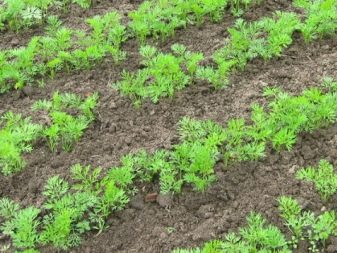
Классический
Here, first of all, it is worth highlighting the main disadvantage of landing technology. Using the usual method, it is quite difficult to control the amount of seeds that are laid in the grooves. Often this leads to thickening of plantings after germination. It is no secret that thinning is a labor-intensive procedure that requires corresponding time costs.
At the same time, an insufficient amount of material leads to a significant decrease in germination. It is also important to note that the classic method involves the use of exclusively dry seeds. Because of this, the material swells longer, germinates more slowly.
The main plus is the absence of any preparatory measures.

Sowing granular seeds
This method is rightfully considered the most convenient. The purchase of granules eliminates the need to use any special devices and devices. It is important to remember that they are coated with nutrients and are relatively large. Thanks to this, the granules are much easier to distribute when planting at the right intervals.
The gaps between the units of planting material are from 5 to 7 cm. The plants will sprout almost simultaneously, and each root crop will be in its place.
The main advantage of the method is that as the carrots grow, they do not have to be thinned out.

With sand
Today, one of the simplest and at the same time effective ways of sowing small seeds is to prepare a mixture with sand in certain proportions. And here it is necessary to take into account two key points.
- The prepared material is mixed with fine, clean and well-dried sand. The amount of the latter gardeners determine individually. It is important that, as a result, the materials are distributed evenly and with the necessary frequency during disembarkation. The recommended ratio is 1 dessert spoon of seeds per liter of sand.
- Use the mixture in a dry or slightly moistened form. It is worth taking into account that in the process of its distribution on the site, the seeds themselves, as a rule, will not be visible.
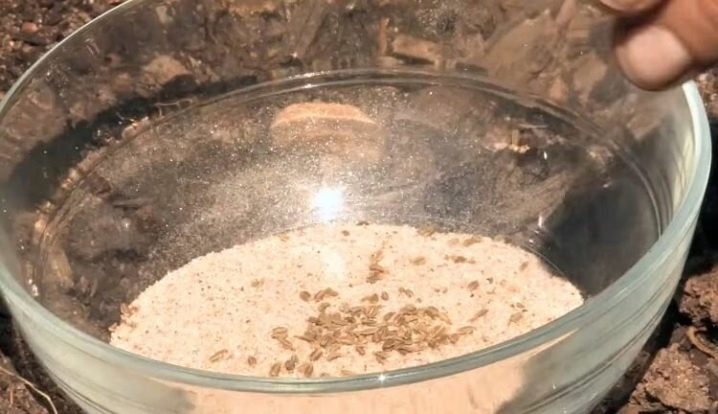
in egg cells
At the initial stage, cardboard trays, in which the bottom is pre-cut, are laid out on the ground and gently pressed. After that, the seed is placed in the base and irrigated abundantly. Further, the growth and development of plants will occur according to the classical scheme. The main advantages of this method include:
- effective moisture retention;
- almost complete absence of weeds;
- dosing of planting material, eliminating in most cases the need for thinning seedlings.
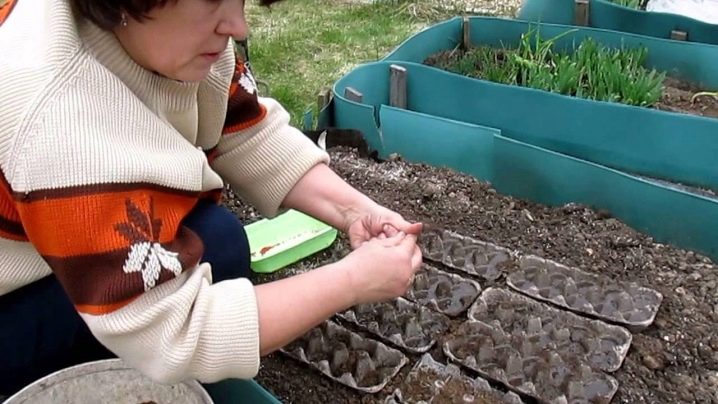
Others
The above list is far from all the methods of planting popular vitamin root crops that are relevant today. Some experienced gardeners, for example, successfully practice planting carrots with drunk and dried coffee. Seeds in this case are mixed with the specified mass. Another proven option is sowing in ridges (similar to potatoes).
One of the common options is this is the planting of the described culture along with the paste. Add 1 tablespoon of flour or any starch to a liter of cold water and, stirring constantly, bring to a boil, after which the resulting mixture is cooled to 30 degrees. At the next stage, a package of seeds is slowly poured into a warm paste, constantly and thoroughly mixing. It remains only to pour it all into a watering can and use it to distribute the composition along the grooves.
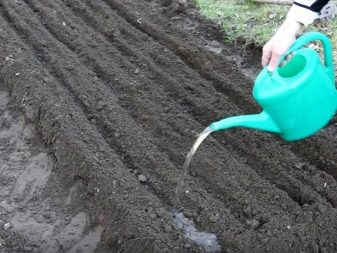
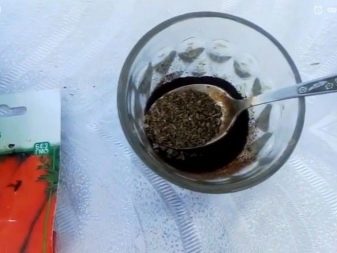
Another simple method is called the tape method. The procedure here is as follows:
- cook a paste with the addition of boric acid;
- on paper, previously laid out on a flat surface, apply a paste;
- distribute the seeds evenly on the ribbons with an interval of 2-2,5 cm;
- after drying, roll the paper into a roll and leave until spring;
- spread the tapes into prepared grooves in the beds.
An equally popular method is the use of a strainer. Seeds are placed in this device and distributed along the grooves. Alternatives to a strainer are a colander, a salt shaker, and a plastic bottle with holes.
